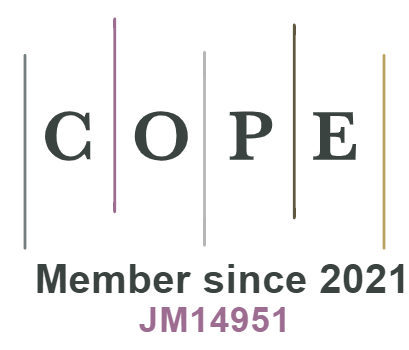Speech and language disturbances in a patient with the clinical features of Steele‑Richardson‑Olszewski syndrome
DOI:
https://doi.org/10.18778/2544-7238.01.05Keywords:
progressive supranuclear palsy, dysarthria, dementiaAbstract
Steele‑Richardson‑Olszewski syndrome also known as progressive supranuclear palsy (PSP) is a neurodegenerative disease of the central nervous system of extrapyramidal type of neuropathy of unknown etiology. This chapter describes the case of 62 patients diagnosed with PSP, the changes they observe are related to selective linguistic dysfunction resulting from subcortical dementia and executive and motor dysfunction, and the functioning of the subject is significantly determined by emotional disturbance.
Downloads
References
Dominguez D.I., De Strooper B., 2002, Novel therapeutic strategies provide the real test for the amyloid hypothesis of Alzheimer’s disease, „Trends in Pharmacological Sciences” nr 23,s. 324–330.
Google Scholar
DOI: https://doi.org/10.1016/S0165-6147(02)02038-2
Gatkowska I., 2012, Diagnoza dyzartrii u dorosłych w neurologii klinicznej, Kraków: Wydawnictwo Uniwersytetu Jagiellońskiego.
Google Scholar
ICD 10, 2008, Międzynarodowa Statystyczna Klasyfikacja Chorób i Problemów Zdrowotnych ICD‑10, www.csioz.gov.pl/interoperacyjnosc/klasyfikacje/ (dostęp: 28.06.2017).
Google Scholar
Jauer‑Niworowska O., 2009, Dyzartria nabyta. Diagnoza logopedyczna i terapia osób dorosłych, Warszawa: Wydawnictwo Akademii Pedagogiki Specjalnej im. M. Grzegorzewskiej.
Google Scholar
Jauer‑Niworowska O., Kwasiborska J., 2009, Dyzartria. Wskazówki do diagnozy różnicowej poszczególnych typów dyzartrii, Gliwice: Wydawnictwo Komlogo.
Google Scholar
Jendroska K., Rossor M.N., Mathias C.J., Daniel S.E., 1995, Morphological overlap between corticobasal degeneration and Pick’s disease: a clinicopathological report, „Movement”, nr 10(1),s. 111–114.
Google Scholar
DOI: https://doi.org/10.1002/mds.870100118
Kertesz A., Davidson W., Munoz D.G., 1999, Clinical and pathological overlap between frontotemporal dementia, primary progressive aphasia and corticobasal degeneration: the Pick complex, „Neurology”, nr 10(1), s. 46–49.
Google Scholar
DOI: https://doi.org/10.1159/000051212
Kozubski W., Liberski P.P., 2006, Neurologia. Podręcznik dla studentów medycyny, Warszawa: Wydawnictwo Lekarskie PZWL.
Google Scholar
Lebrun Y., Devreux F., Rousseau J.J., 1986, Language and speech in a patient with a clinical diagnosis of progressive supranuclear palsy, „ Brain and Language”, nr 27, s. 247–256.
Google Scholar
DOI: https://doi.org/10.1016/0093-934X(86)90019-2
Liberski P., Sobow T., Sikorska B., 2005, Postępujące zwyrodnienie nadjądrowe (choroba Steele‑Richardsona‑Olszewskiego), [w:] P.P. Liberski, W. Papierz (red.), Neuropatologia Mossakowskiego, Lublin: Wydawnictwo Czelej, s. 538–545.
Google Scholar
Litvan I., Agid Y., Calne D., Campbell G., Dubois B., Duvoisin R.C., Goetz C.G., Golbe L.I., Grafman J., Growdon J.H., Hallett M., Jankovic J., Quinn N.P., Tolosa E., Zee D.S., 1996a, Clinical research criteria for the diagnosis of progressive supranuclear palsy(Steele‑Richardson‑Olszewski syndrome): report of the NINDS‑SPSP international workshop, „Neurology”, nr 47 (1), s. 1–9.
Google Scholar
DOI: https://doi.org/10.1212/WNL.47.1.1
Litwin M., Pietrzyk I., 2013, Diagnoza i terapia dysfagii, Gliwice: Wydawnictwo Komlogo.
Google Scholar
Morales B., Martinez A., Gonzalo I., Vidal L., Ros R., Gomez‑Tortosa E., Rabano A., 2002, Steele‑Richardson‑Olszewski syndrome in a patient with a single C212Y mutation in the parkin protein, „Movement Disorders in Neurologic and Systemic Disease”, nr 17(6), s. 1374–1380.
Google Scholar
DOI: https://doi.org/10.1002/mds.10264
Morris H.R., Baker M., Yasojima K., Houlden H., Khan M.N., Wood N.W., Hardy J., Grossman M., Trojanowski J., Revesz T., Bigio E.H., Bergeron C., Janssen J.C., McGeer P.L., Rossor M.N., Lees A.J., Lantos P.L., Hutton M., 2002, Analysis of tau haplotypes in Pick’s disease, „Neurology”, nr 59(3), s. 443–445.
Google Scholar
DOI: https://doi.org/10.1212/WNL.59.3.443
Olszewski H., 2008, Otępienie czołowo‑skroniowe. Ujęcie neuropsychologiczne, Kraków: Oficyna Wydawnicza „Impuls”.
Google Scholar
Panasiuk J., 2015, Postępowanie logopedyczne w przypadkach chorób neurodegeneracyjnych, [w:] S. Grabias, J. Panasiuk, T. Woźniak (red.), Logopedia. Standardy postępowanialogopedycznego, Lublin: Wydawnictwo Uniwersytetu Marii Curie‑Skłodowskiej, s. 955–995.
Google Scholar
Pąchalska M., 1999, Afazjologia, Warszawa–Kraków: Wydawnictwo Naukowe PWN.
Google Scholar
Pąchalska M., Kurzbauer H., Grochmal‑Bach B., MacQeen B.D., Urbanik A., Herman‑Sucharska I., 2011, Nietypowe zaburzenia języka i mowy u pacjentki z klinicznym rozpoznaniem zespołu Steele’a‑Richardsona‑Olszewskiego, [w:] J. Leszek (red.), Choroby otępienne. Teoria i praktyka, Wrocław: Wydawnictwo Continuo, s. 271–290.
Google Scholar
Piskunowicz M., Bieliński M., Zgliński A., Borkowska A., 2013, Testy fluencji słownej – zastosowanie w diagnostyce neuropsychologicznej, „Psychiatria Polska”, t. XLVII, nr 3,s. 475–485.
Google Scholar
Richardson J.C., Steele J., Olszewski J., 1963, Supranuclear ophthalmoplegia, pseudobulbar palsy, nuchal dystonia and dementia. A clinical report on eight cases of „heterogeneous system degeneration”, „Transactions of the American Neurological Association”, nr 88, s. 25–29.
Google Scholar
Sitek E.J., Konkel A., Międzobrodzka E., Sołtan W., Barczak A., Sławek J., 2014, Kliniczne zastosowanie prób fluencji słownej w chorobie Huntingtona, „Hygeia Public Health”, nr 49(2),s. 215–221.
Google Scholar
Steele J.C., Richardson J.C., Olszewski J., 1964, Progressive supranuclear palsy; a heterogenous degeneration involving the brain stem, ganglia and cerebellum with vertical gaze and pseudobulbar palsy, nuchal dystonia and dementia, „Archives of Neurology”, nr 10, s. 333–359.
Google Scholar
DOI: https://doi.org/10.1001/archneur.1964.00460160003001
Stręk P., 2002, Diagnostyka dysfagii ustno‑gardłowej, „Terapia”, nr 10(2), s. 12–15.
Google Scholar
Szepietowska E.M., 2000, Badanie neuropsychologiczne. Procedura i ocena, Lublin: Wydawnictwo Uniwersytetu Marii Curie‑Skłodowskiej.
Google Scholar
Szepietowska E.M., Gawda B., 2011, Ścieszkami fluencji werbalnej, Lublin: Wydawnictwo Uniwersytetu Marii Curie‑Skłodowskiej.
Google Scholar
Szepietowska E.M., Hasiec T., Janczyk‑Mikoś A., 2012, Fluencja słowna werbalna i niewerbalna w różnych stadiach i formach choroby Parkinsona, „Psychogeriatria Polska”, nr 9(4), s. 137–148.
Google Scholar
Szłapa K., Tomasik I., Wrzesiński S., 2013, Kwestionariusz diagnostyczny zaburzeń mowy ze szczególnym uwzględnieniem afazji i dyzartrii dla młodzieży i dorosłych, Gdańsk:Wydawnictwo Harmonia.
Google Scholar
Szumska J., 1980, Metody badania afazji, Warszawa: Państwowy Zakład Wydawnictw Lekarskich.
Google Scholar
Tarkowski Z., 1999, Dyzartria, Lublin: Wydawnictwo Fundacji „Orator”.
Google Scholar
Tomik J., Solowska B., 2015, Zaburzenia połykania, „Neurolingwistyka Praktyczna”, nr 1, s. 27–41.
Google Scholar
Wiskirska‑Woźnica B., 2016, Wprowadzenie do dysfagii jako problemu wielospecjalistycznego, „Otorynolaryngologia” nr 15(2), s. 59–62.
Google Scholar
Wskirska‑Woźnica B., Pruszewicz A., Walczak A., 2002, Zaburzenia połykania – postępowanie diagnostyczne i zasady rehabilitacji, „Przewodnik Lekarza. Otolaryngologia”, nr 9, s. 102–104.
Google Scholar
Downloads
Published
How to Cite
Issue
Section
License

This work is licensed under a Creative Commons Attribution-NonCommercial-NoDerivatives 4.0 International License.












